Format Ongoing | ||
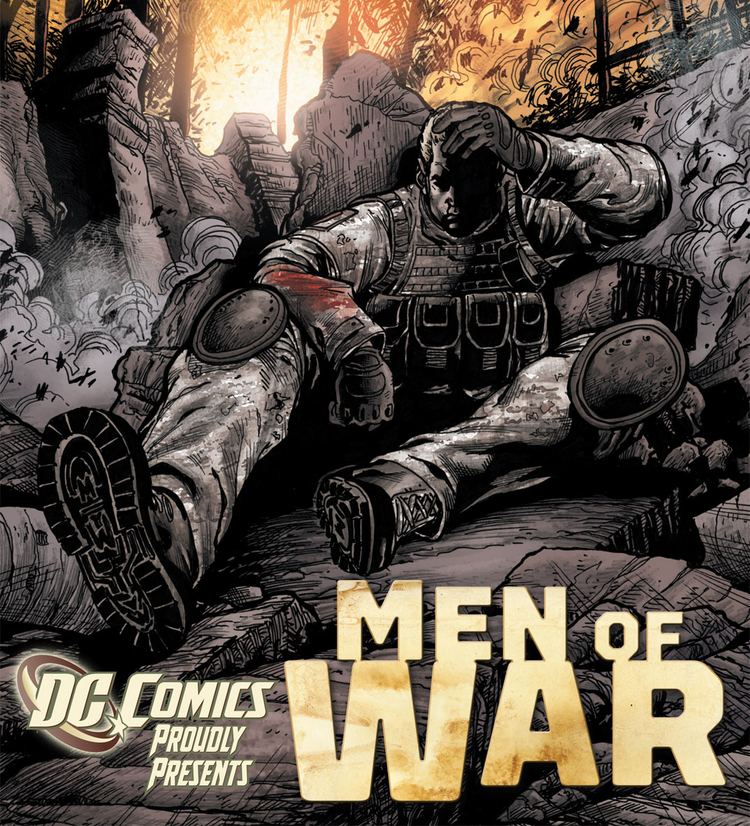 | ||
Schedule All-American Men of War: Bimonthly:#1-11, #77-117Monthly:#12-76Men of War:Eight times a year:#1-9Monthly:#10-26 Publication date All-American Men of War:August–September 1952 - September–October 1966Men of War:August 1977–March 1980Men of War vol. 2:November 2011–June 2012 Number of issues All-American Men of War: 118Men of War: 26Men of War vol. 2: 8 Writer(s) ListAll-American Men of War: Hank Chapman, France Herron, Robert Kanigher;Men of War Cary Burkett, Jack C. Harris, Paul Kupperberg, Roger McKenzie;Men of War vol. 2: Ivan Brandon Similar GI Combat, Our Army at War, Star Spangled War Stories, Our Fighting Forces, Legion Lost | ||
Men of War is the name of several American comic book series published by DC Comics. For the most part, the series was an anthology comic featuring fictional stories about the American military during World War II.
Contents
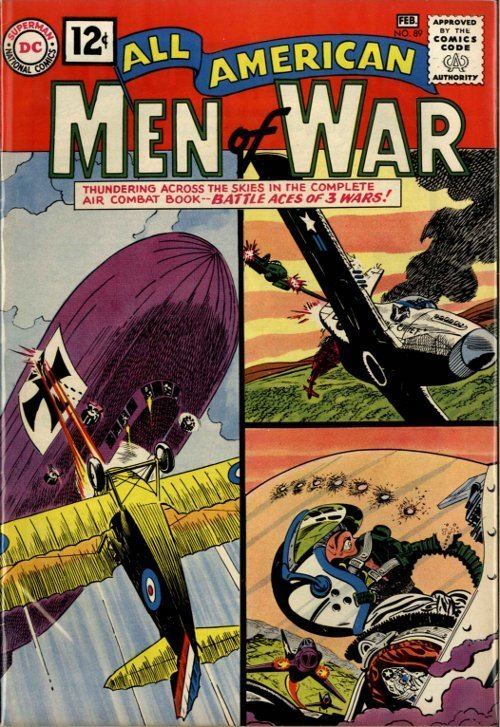
The original series, All-American Men of War, published 118 issues from 1956 to 1966. Contributors to All-American Men of War included writers Robert Kanigher, Hank Chapman, and France Herron; and artists Alex Toth, Gene Colan, Mort Drucker, Mike Esposito, Jerry Grandenetti, Sheldon Moldoff, Russ Heath, Bernard Krigstein, Joe Kubert, and Irv Novick. Pop artist Roy Lichtenstein's famous 1962 work Whaam! is based on a Jerry Grandenetti panel from the cover of All-American Men of War #89 (January–February 1962).
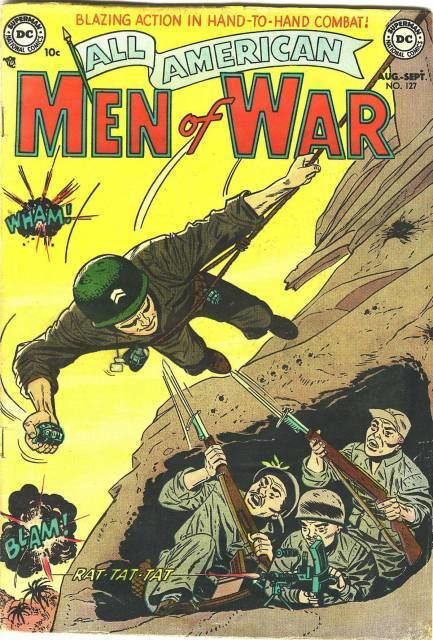
A second series, simply titled Men of War, published 26 issues from 1977–1980. Regular contributors included writers Kanigher, Roger McKenzie, Cary Burkett, Jack C. Harris, and Paul Kupperberg; and artists Grandenetti, Dick Ayers, and Howard Chaykin. Joe Kubert provided the cover art for the full series run except issue #1.

A third series, also titled Men of War starred Sgt. Rock and was published from November 2011–June 2012.
All-American Men of War
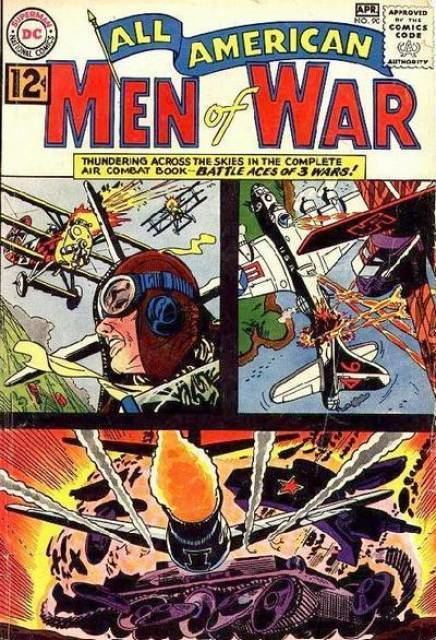
All-American Men of War did not start with issue #1; it was a renaming of the 1948 series All-American Western, which itself was a renaming of the 1939 series All-American Comics. The title became All-American Men of War with issue #127, published in August–September 1952. All-American Men of War published two issues before rebooting the numbering with issue #2 in December 1952–January 1953. All-American Men of War #35 (July 1956) featured the first painted cover on a DC comic book.
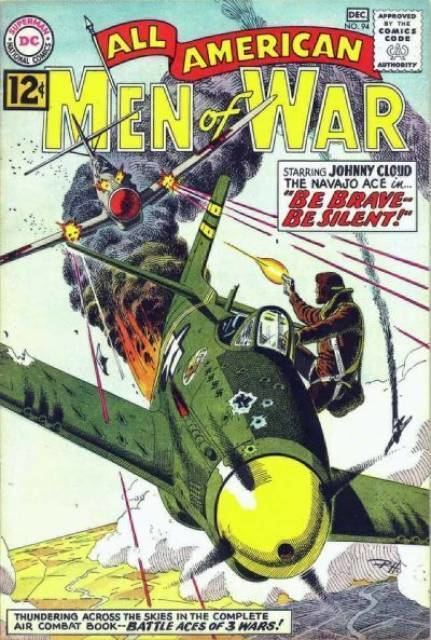
One of the earliest known examples of pop art, Roy Lichtenstein's Whaam! adapted a panel from a story titled "Star Jockey", from All-American Men of War #89 (January–February 1962), drawn by Irv Novick. The painting depicts a fighter aircraft, the North American P-51 Mustang, firing a rocket into an enemy plane, with a red-and-yellow explosion (in the source comic the aircraft is a North American F-86 Sabre). The cartoon style is heightened by the use of the onomatopoeic lettering "Whaam!" and the yellow-boxed caption with black lettering. Lichtenstein used other artwork from this series for other works, including Brattata and Bratatat!.
The All-American Men of War letters page was titled "Combat Corner."
Men of War

After eleven years, the series returned with the shortened title Men of War. It was published for 26 issues from August 1977–March 1980.
Men of War vol. 2
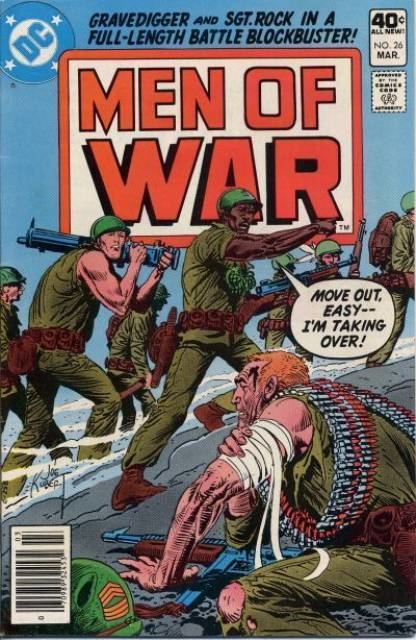
Men of War vol. 2 was launched in 2011 as part of The New 52 initiative; the series was written by Ivan Brandon. In January 2012, DC announced that Men of War would be one of six titles cancelled following its eighth issue to be replaced by a "second wave" of six new titles.
